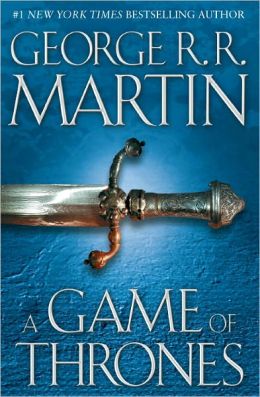08/26/2009
The CIA's harsh interrogation techniques saved countless American lives by
forcing al Qaeda chieftains to disclose a string of sophisticated terror
plots to infiltrate the United States with cold-blooded killers.
That fact is established in two documents released Monday by the Justice
Department, hours after they released the CIA Inspector General report which
Attorney General Holder has used as a basis to appoint a special prosecutor
to investigate the CIA interrogators.
The successes produced by the so-called "enhanced interrogation techniques"
are disclosed in two declassified CIA reports -- the same ones demanded to
be released by former Vice President Dick Cheney. He made the demand after
President Barack Obama ordered the release of a Justice Department memo
outlining the techniques -- but not the results.
The bottom line: the two reports show the enhanced interrogation techniques,
whether right or wrong, protected America.
Here is one example. Abu Zubaydah, one of three high-value al Qaeda members
the CIA water-boarded, coughed up the name of Khalid Sheik Mohammed as the
mastermind of the September 11, 2001 attacks. KSM was captured (also
water-boarded) and began to talk. He provided an inside look at how al Qaeda
operated, from finances to recruitment. And he divulged other attack plans
as well as the names of other terrorists who had not before been identified.
KSM admitted funneling money to operative Majid Khan. The captured Khan
admitted to giving the money to another operative named Zubair. The CIA
captured Zubair in 2003. Zubair disclosed he worked directly for Hambali,
the al Qaeda kingpin in South Asia who pulled off the horrific 2002 Bali,
Indonesia, bombings that killed 240 people.
With is information, the CIA tracked down and captured Hambali, who is now
in the military prison at Guantanamo Bay, Cuba. Next, KSM provided the name
of Hambali's brother, Rusman Gunawan, as his successor in Asia.
Gunawan was captured and provided the crown jewels: Hambali had selected a
cadre of terrorists to travel to Karachi, Pakistan, for training. There, KSM
was to groom them to travel to the United States and unleash attacks. One
attack envisioned by KSM as an encore to September 11 was to hijack more
aircraft and fly them into skyscrapers around the U.S.
There's more. Khalid had recruited someone already in the U.S. -- an Ohio
truck driver by the name of Iyman Faris -- to kill Americans. Faris was in
the planning stages when the FBI arrested him. He was convicted and
sentenced to 20 years in prison.
Khalid also disclosed another plot. He was conspiring with Sayf al Rahman
Paracha to smuggle explosives into the U.S. to bomb buildings in New York
City. The U.S. located and arrested Paracha before he could set off bombs.
He, too, sits at Guantanamo, as do KSM and Zubaydah.
The two Cheney-requested documents also show the interrogations foiled an al
Qaeda program to produce and spread anthrax, the deadly germ used in
biological warfare.
KSM produced the names of three al Qaeda members working on anthrax. All
three were arrested.
Other foiled plots: bomb the U.S. embassy in Pakistan; truck-bomb the U.S.
military base on the Horn of Africa; and fly planes into terminals at
Heathrow Airport. The Heathrow plot was fairly mature. KSM had selected
operatives and some 10 countries from where saboteurs would board commercial
airliners.
The information is found in a CIA report is entitled, "Detainee Reporting
Pivotal for the War Against al Qaeda."
It concludes: "Detainee reporting has helped thwart a number of al Qaeda
plots to attack targets in the West and elsewhere. Not only have detainees
reported on potential targets and techniques that al Qaeda operational
planners have considered but arrests also have disrupted attack plans in
progress."
And it said, "Since 11 September, the capture and debriefing of [high value
targets] has significantly advanced our understanding of al Qaeda and
affiliated terrorist groups. Before the capture of Abu Zubaydah in March
2002, we had significant gaps in knowledge about al Qaeda's organizational
structure, key members and associates, capabilities, and its presence around
the globe. Within months of his arrest, Abu Zubaydah provided details about
al Qaeda's organizational structure, key operatives and modus operandi."
The second Cheney-requested report deals more closely with information
provided by Khalid Sheik Mohammed, the man who proudly took credit for 9-11
and for beheading Wall Street Journal reporter Daniel Pearl.
"Since his March 2003 capture, Khalid Sheik Mohammed, the driving force
behind the 11 September attacks as well as several subsequent plots against
U.S. and Western targets worldwide, has become one of the U.S. government's
key sources on al Qaeda," the report said. "He has provided intelligence
that has led directly to the capture of operatives or fleshed our
understanding of the activities of important detainees, which in turn
assisted in the debriefings of these individuals."
As for Cheney, he feels vindicated. He released a statement that said, "The
documents released Monday clearly demonstrated that the individuals
subjected to enhanced interrogation techniques provided the bulk of
intelligence we gained about al Qaeda. This intelligence saved lives and
prevented terrorist attacks."
Mr. Scarborough is a national security writer who has written books on
Donald Rumsfeld and the CIA, including the New York Times bestseller
Rumsfeld's War.

















No comments:
Post a Comment